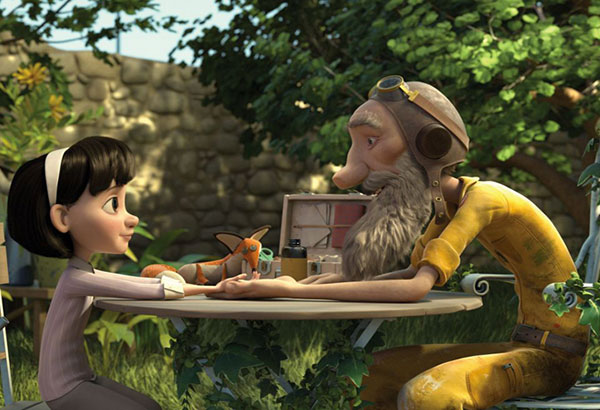MANILA, Philippines – W e’ve all had our fair share of book review crimes in high school. I plead guilty to 1) not buying my own copy of the assigned reading and 2) searching for book reviews online for me to further summarize and pass off as my own report. (Hi, Sir Bernard!) Thankfully, I never stooped to copy-pasting someone else’s review. But even though I was spoon-fed by Spark Notes with its neatly coded hyperlinks, I did still learn the discipline of finding the important details and interpreting them on my own. And by that, I mean writing a reflection paper that was 10 percent about the book and 90 percent relating it to that time I was friendless when I transferred to a new school. But isn’t that the point of reading? Focusing on the main points and understanding how they’re relevant to us?
The same sentiment goes for books being turned to movies. I may be alone in thinking this but I never really understood the demand that the two be exactly alike. One rumored tweet of a possible movie tie-in and the next thing you know, polls are already up on which Hollywood star should play the role of their fictional OTP (one true pairing). You see, it’s not hard for book fans to be meticulous. After all, we readers did put a lot of effort into crafting our interpretations in our (somewhat) deranged minds. We’ve seen people online go crazy critical about the movie adaptations of Harry Potter, the Twilight saga and the Hunger Games. But with The Little Prince classic recently turned into a box office hit/miss (???), one can only imagine the pressure that came with making it.
Mark Osborne’s new non-straight adaptation of the classic tale begs not to be compared to the original. For the animated movie, Antoine de Saint-Exupéry’s The Little Prince is simply woven into a completely original story set in modern day. It revolves around a young girl who is pretty much like most of us — living out a day-to-day life plan set by society and her mother. The bonus is that she happens to have a cool old aviator for a neighbor who teaches her how to live a little. While it’s easy to say the resemblance to the original plot is a little obvious, the movie makes a stark contrast with the use of cinematic techniques. No one wants to get too geeky about it but you can pretty much tell which parts are from the classic original and which are new. The difference is visual: the modern-day scenes boast high-quality CGI effects (like any Hollywood blockbuster does these days) while the narrated Little Prince parts are told in 2D hand-painted stop-motion animation. The sharp lines in muted colors reminiscent of falling into the trap of societal norms are contrasted with the imperfect textured sketches representing a more personal lifestyle. They say one of the downsides of turning books into movies is limiting the imagination to what technology can do. But if there’s anything that this movie did as well as the book did, it’s to make us feel something, especially with the help of imagery, sound and editing.
On a bigger scale, what Osborne did was to visually represent not so much the classic tale but validate the timelessness of its lessons. A quick Google search on The Little Prince and you’ll see countless results in French, English and Spanish, among other languages. It is, after all, the most widely translated piece of French literature simply because it tells a story that needs to be heard. Regardless of age, time, nationality and manner of storytelling, everyone needs to be reminded of the value of enlightenment through exploration. That, and the importance of not losing one’s child-like perspective in the ever-so-complicated world of adulthood.
I’d like to think of this movie adaptation as another language translation of The Little Prince made fit for the new generation of people coming of age. For a generation of teens with the attention span of a five-year-old, most might not have the patience to sit down and read classics (even if they’re only 70 pages long) as much as they would edit their photos on VSCO or binge-watch on YouTube. But that doesn’t mean they should be denied valuable life stories that could make them better adults. If anything, what Osborne did was take the most important parts of The Little Prince story and repackage it in a way that is easily digested by millennials — visually engaging, with a lot of relatable real-life examples; simple, yet still making a lot of sense.


